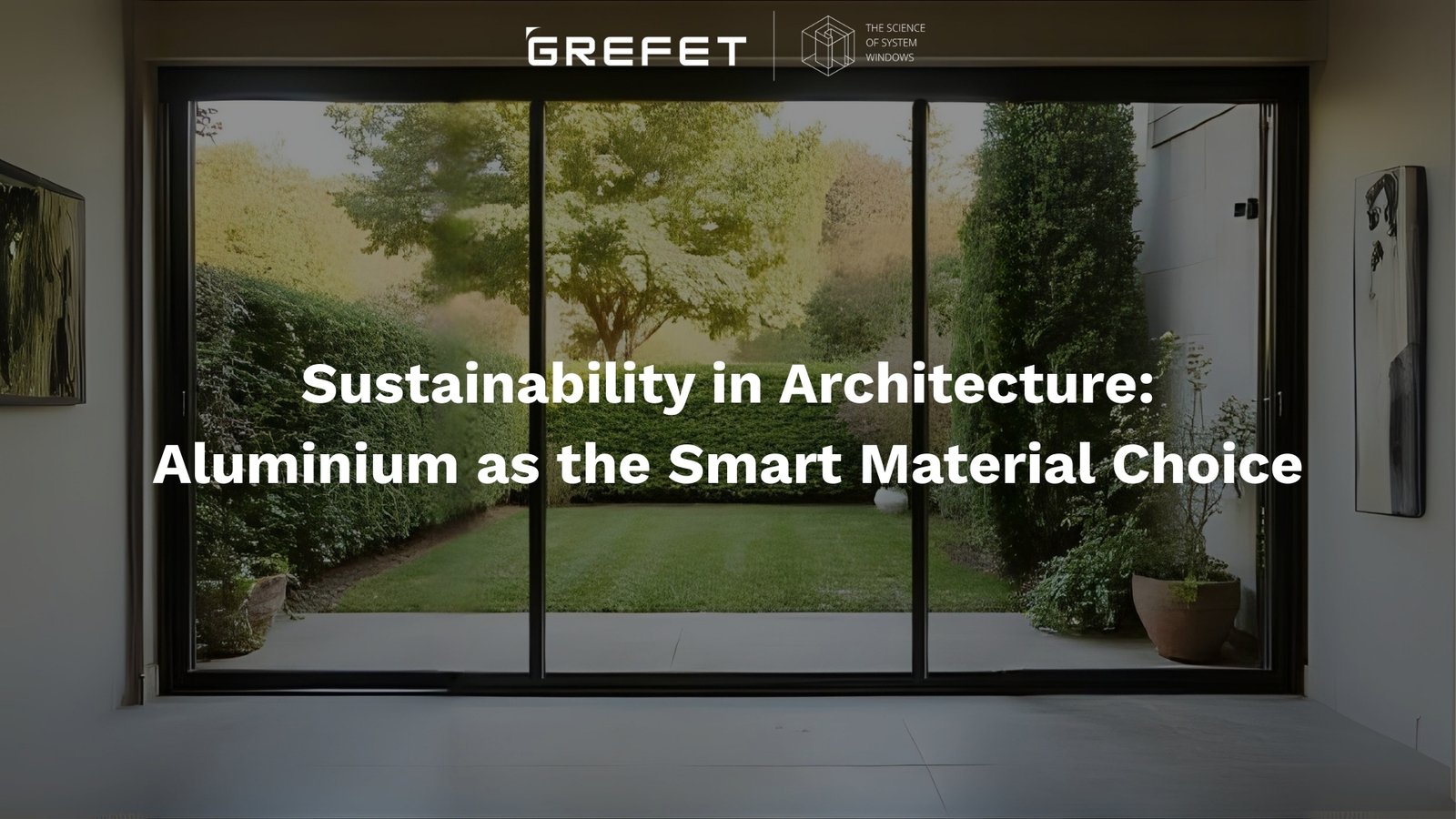Sustainability in architecture has become a defining principle for construction in India and across the world. With rising environmental awareness, architects and homeowners are looking for materials that minimize ecological impact while delivering long-term performance. Aluminium, often called the metal of modern architecture, has emerged as a frontrunner because it balances strength, design flexibility, and eco-friendliness.
At GREFET, we believe sustainability isn’t just about ticking boxes, it’s about creating homes and buildings that last longer, consume less energy, and reduce waste. Aluminium windows and doors are a critical part of this movement, and here’s why.
1. Aluminium is Infinitely Recyclable
One of aluminium’s biggest strengths is its recyclability. Unlike wood that deteriorates or PVC that degrades, aluminium can be recycled repeatedly without losing quality. In fact, almost 75% of aluminium ever produced is still in use today. For India, where construction waste is a growing concern, this makes aluminium a sustainable choice for architecture.
GREFET’s aluminium systems made from 6036-T6 grade, contribute to this cycle by ensuring every profile is engineered for longevity and future recyclability, minimizing the material footprint over decades of use.
2. Energy Efficiency for Indian Climates
Indian households spend a significant portion of their energy bills on cooling during summers. Aluminium systems, when designed correctly, can dramatically improve insulation. GREFET’s aluminium systems incorporate thermally insulated windows, double sealing, and precision gaskets that reduce air leakage. This helps maintain comfortable indoor temperatures, lowers reliance on air-conditioning, and cuts long-term energy costs.
Better insulation means lower carbon emissions, making aluminium not just durable but also eco-friendly in daily use.
3. Durability Means Less Waste
Sustainability in architecture ties directly to how long materials last. Wood requires constant maintenance and can warp or rot in humid climates. PVC, while cheaper, often fails in India’s extreme temperatures. Aluminium, however, withstands high winds, heavy rains, dust, and scorching heat without losing shape or function.
By lasting decades without major repairs or replacements, aluminium reduces material waste and costs. For homeowners, this means peace of mind; for the planet, it means fewer resources consumed.
4. Lightweight Strength for Smarter Construction
Aluminium’s unique strength-to-weight ratio is another sustainability advantage. Being lightweight lowers transport emissions during construction while its strength allows for slim frames that hold large glass panels. This promotes daylight-filled interiors, reducing the need for artificial lighting.
At GREFET, our slim aluminium frames allow architects to design open, airy spaces that balance energy savings with modern aesthetics, a win-win for both sustainability and lifestyle.
5. Supporting Green Building Standards
Green building certifications like LEED, GRIHA, and IGBC are becoming standard in Indian construction. Aluminium windows and doors play a critical role in achieving these benchmarks. From recyclability to energy performance, GREFET’s engineered aluminium systems align with green building requirements, making them a preferred choice for eco-conscious architects and homeowners.
Conclusion
Sustainability in architecture isn’t just a slogan; it’s a practical approach for modern living. Aluminium is recyclable, durable, and energy-efficient, making it one of the most future-ready materials in construction. By choosing GREFET aluminium systems, homeowners and architects can create buildings that are not only stylish but also sustainable, designed to perform for decades while reducing environmental impact.


